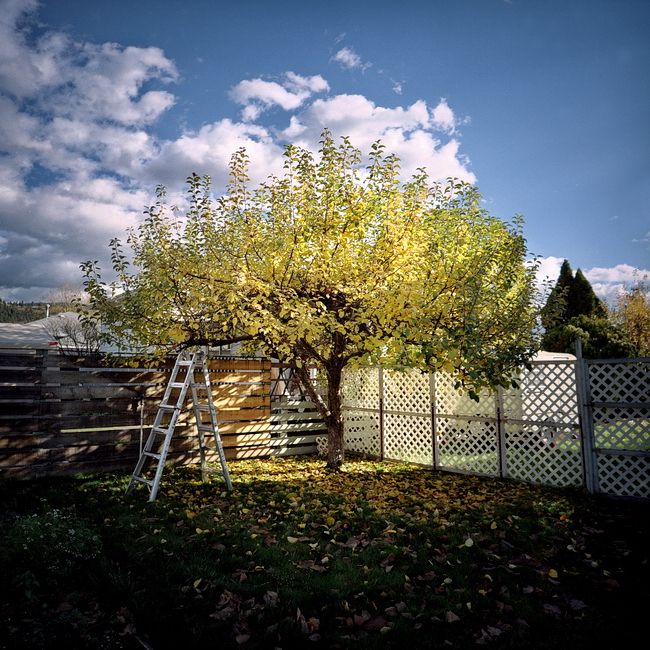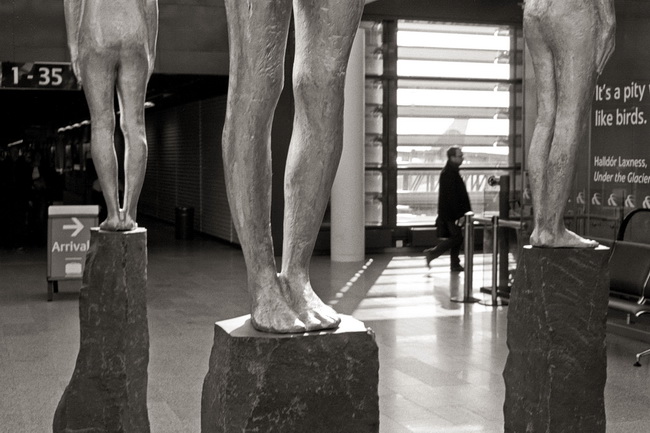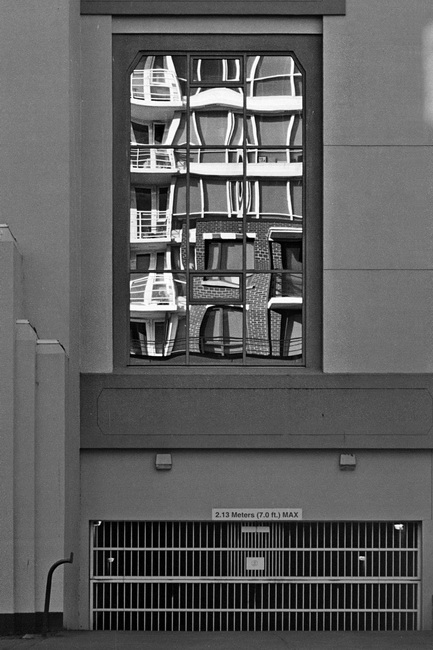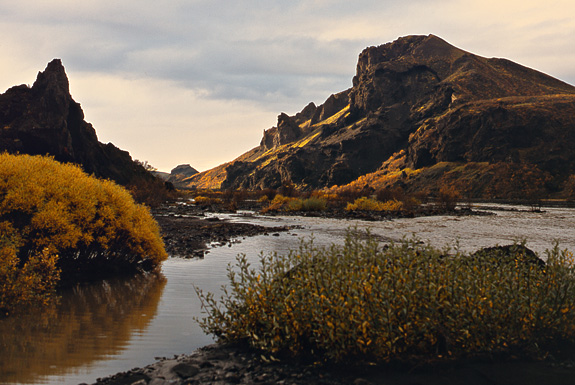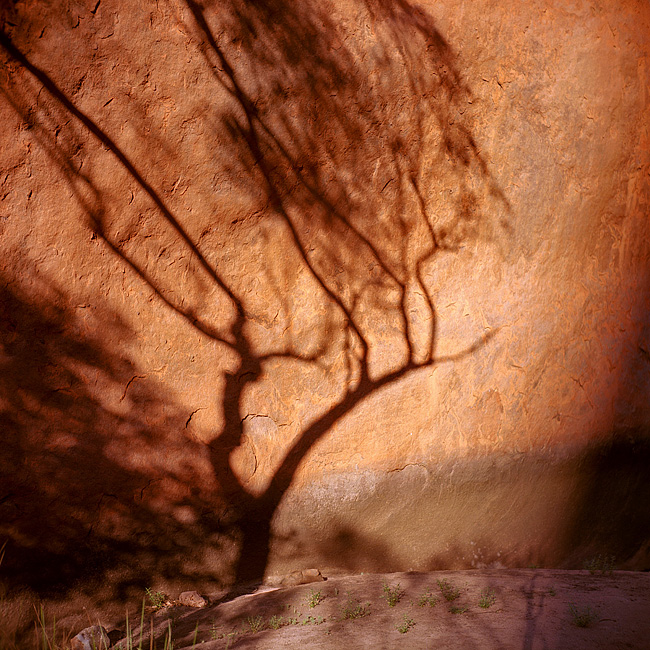Let’s get that out of the way right at the start. Few people are going to feel great shelling out $470 CDN ($420 US) for a plastic bodied, zone-focus camera. But is it overpriced? That’s a trickier question. Can you name another quality medium-format film camera currently in production? Can you name another compact medium-format camera with a 38mm wide-angle lens? No, me either. So, if those attributes are desirable to you, then $470 is simply the price of admission.
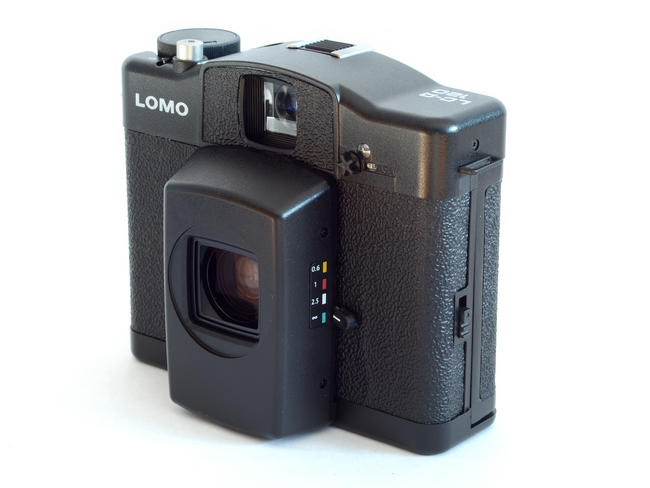 I bought my LC-A 120 directly from Lomography. Many of the reviews I encountered on-line while researching this purchase seem to have been written by individuals who’d been loaned a sample camera from Lomography, and/or were using film for the first time. I’m not saying these things preclude an unbiased or thorough assessment, but I do wonder if the camera got a bit of a free ride as a result. Anyway, here’s what I found after running a few rolls through the LC-A 120.
I bought my LC-A 120 directly from Lomography. Many of the reviews I encountered on-line while researching this purchase seem to have been written by individuals who’d been loaned a sample camera from Lomography, and/or were using film for the first time. I’m not saying these things preclude an unbiased or thorough assessment, but I do wonder if the camera got a bit of a free ride as a result. Anyway, here’s what I found after running a few rolls through the LC-A 120.
To begin, I’ll repeat my standard Lomography disclaimer: I’m not into photographic tricks like cross-processing or double exposure or novelty film types. Nothing against anyone who is — it’s just not my cup of tea. As you can see from poking around this site, I do pretty conventional photography with a healthy dose of landscape shooting, so I assessed my LC-A 120 on the basis of how well it works for that.
AUTOMATIC FOR THE PEOPLE
The LC-A 120 does it all. By that, I don’t mean that it’s capable of performing brilliantly in any circumstance, rather, it does everything for you. It’s fully automatic. The only adjustments available to you are focus (zone only) and the ISO setting. Is that a good thing? As with so much with this camera, that depends. Some people find this level of automation liberating, others find it limiting.

When the lens cover is in the up/closed position (as seen here) the camera’s shutter release is disengaged.
The camera’s program mode opts for faster shutter speeds over smaller apertures to get the correct exposure — it appears the camera operates with the lens fully open most of the time. It’s only under really bright conditions (or with fast film) that the aperture begin to stop down. And when it does, the diaphragm blades produce a “cat’s eye” opening, rather than a circle.
The LC-A 120’S 38mm f/4.5 Minigon XL optic is good, but not exceptional. Well, in the Lomography context, it is exceptional — it’s definitely a cut above the plastic lens aesthetic that the company is best known for — but it the wider world, not so much. At full aperture (the camera’s preferred setting, as noted above) it’s not exactly razor sharp. The centre is decent, but the image softens noticeably toward the corners. This is why your results will likely be better with ISO 400 film than ISO 100 — when the camera’s lens is stopped down a bit (as it more often is with the faster film), results improve significantly.
One of my initial concerns was how much vignetting I’d get in my photos. I’d seen some samples on-line with corners that were practically black, while other shots had only a modest amount of dimming. I don’t object to a little vignetting — I’ll even add it in post-processing if I think it makes the picture better — but I don’t like having it imposed on every photo whether I want it or not. Thankfully the results I got weren’t as bad as I feared. Yes, there was more vignetting than ideal, but not so much it couldn’t be corrected in post-processing.
BUTTON PUSHING
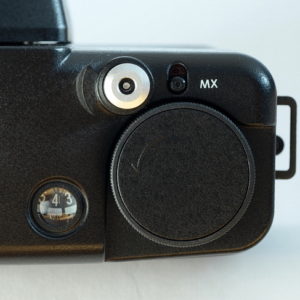
Visible here are the shutter release button, double exposure switch (labelled “MX”), film advance knob, and frame-counter window.
In use, I found the LC-A 120 to be a fairly joyless experience. The shutter release has a lot of travel and the camera fires with a metallic “clunk-ching!” sound. Both the ISO and frame counter windows are small and difficult to read. On the plus side of the ledger, the viewfinder is reasonably accurate and the sliding lens cover works well, if stiffly. The camera is also very lightweight — you could wear it around your neck all day and not be troubled by it.
I didn’t experience any difficulty loading film, which was something widely reported in the reviews I saw. Possibly the design of the camera has changed since its introduction, or perhaps some testers struggled because they were using roll film for the first time.
One of the camera’s biggest problems is its rather crude film-advance mechanism which introduces huge spaces between frames. (There’s no red window on the film door — you simply turn the film-advance knob until it locks.) As a result of this mechanism, you often get fewer than 12 pictures per roll. Indeed, that was my experience with my first roll (Lomography brand 400 speed colour film), which yielded only 10 complete (and one partly complete) pictures. It turns out this is a “known fault” and to some extent depends on how you line up the film’s index mark, and what brand film you use. You can read chapter and verse about the issue here.
GOOD? BAD? UGLY?
The LC-A 120 is very much a mixed bag and how you feel about depends largely on what you do with it. For landscape shots, the shallow depth of focus and lack of aperture control proved to be a problem in many circumstances. But for street shooting, I can see where those same characteristics work in one’s favour. (Eduardo Pavez Goye does a nice job covering the camera’s virtues for this application in his video.) Would I recommend the camera to others? Sure — but only with a long list of caveats. You really have to know what you’re getting and be okay with that.
 As for me, I ended up sending the camera back for a refund. To be honest, the film-spacing issue bothered me a lot. If this were a $200 camera, I might have learned to work around that. But this is the kind of defect that really shouldn’t appear in a camera that approaches $500. I also found that the exposure program’s “fully open” priority limited the kinds of pictures I’d hoped to make. So, for me, the Lomo LC-A 120 didn’t add up. That’s too bad. There’s definitely room in my camera collection for a lightweight wide-angle, medium-format rig. The LC-A 120 came close, but ultimately fell short.
As for me, I ended up sending the camera back for a refund. To be honest, the film-spacing issue bothered me a lot. If this were a $200 camera, I might have learned to work around that. But this is the kind of defect that really shouldn’t appear in a camera that approaches $500. I also found that the exposure program’s “fully open” priority limited the kinds of pictures I’d hoped to make. So, for me, the Lomo LC-A 120 didn’t add up. That’s too bad. There’s definitely room in my camera collection for a lightweight wide-angle, medium-format rig. The LC-A 120 came close, but ultimately fell short.
Finally, by way of a post script, I have to say that my experience with Lomography’s customer support was disappointing. The representative I discussed the frame-spacing problem with seemed unaware of the issue, even though it’s a widely known defect. More frustratingly, it seemed that every interaction required two or more follow-up e-mails to get a response. Although I ultimately got all my money back, the process was more arduous and frustrating than it really should have been.
(Click here to see some of my photos captured with this camera.)
Did you find this article interesting or helpful? If so, consider using this link the next time you shop at Amazon.com. Better yet, bookmark it for future use. Thanks to Amazon’s associates program, doing so costs you nothing yet helps keep this site up and running. Thanks!

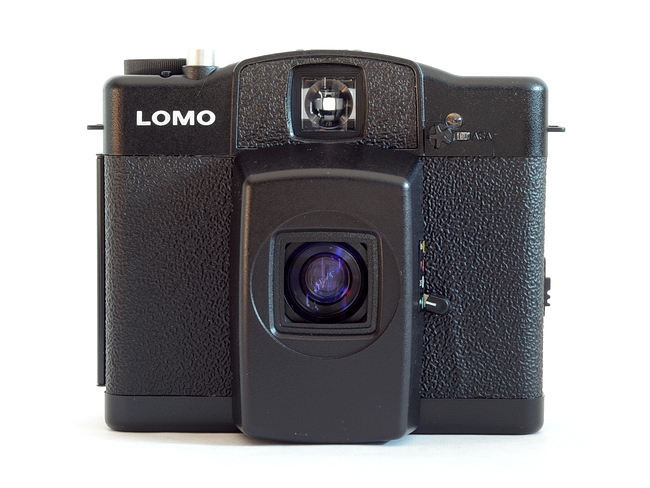
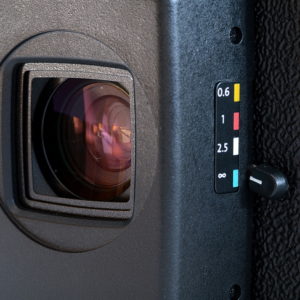
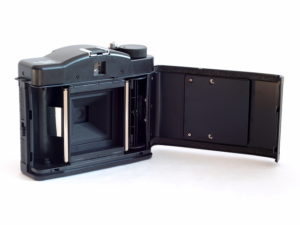
 Subscribe with RSS
Subscribe with RSS